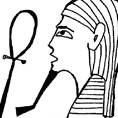Culture is defined by the UNESCO Universal Declaration on Cultural Diversity as the set of distinctive spiritual, material, intellectual and emotional features of society or a social group, […] it encompasses, in addition to art and literature, lifestyles, ways of living together, value systems, traditions and beliefs.

Okeanos was, in Greek Mythology, the titan and protogonos (primeval god) of the great Earth-encircling river Okeanos, the source of all the Earth’s freshwater, including rivers, wells, springs and rain clouds. His wife was the Earth goddess Tethys, who distributed his flow to the Earth via subterranean caverns. She gave birth to their Potamos sons (rivers) and Okeanis daughters (springs and fountains).
The southwest United States and northwest Mexico are in a rain shadow cast by mountain ranges to the west. Rainfall is light and unreliable. The indigenous people who live here welcome rain into their lives and land, praying for the blessing of rain through a variety of ceremonies and creative expressions. Some of these are permanent, such as embroidered figures on their ceremonial garment. Others are intended to be ephemeral, such as ceremonial body painting or sand paintings. They can also take the form of music, song, oration, poetry and prayer.
Read more

